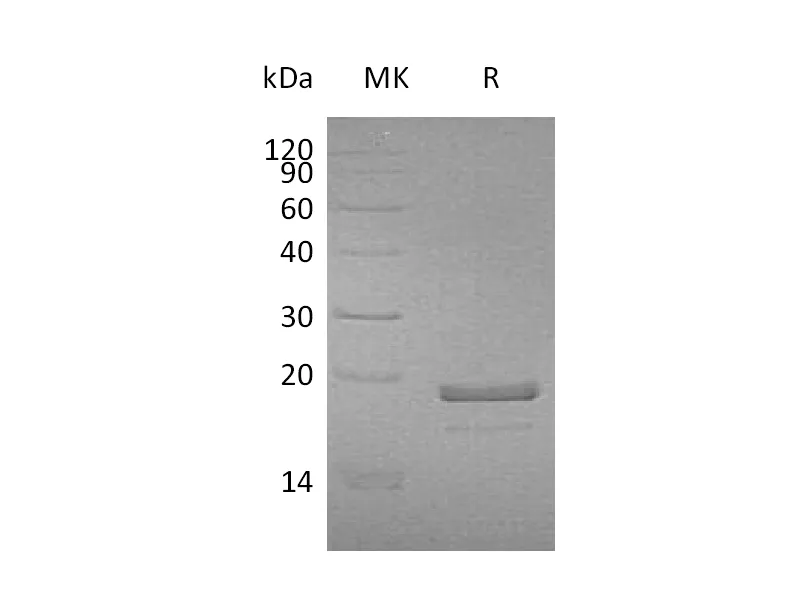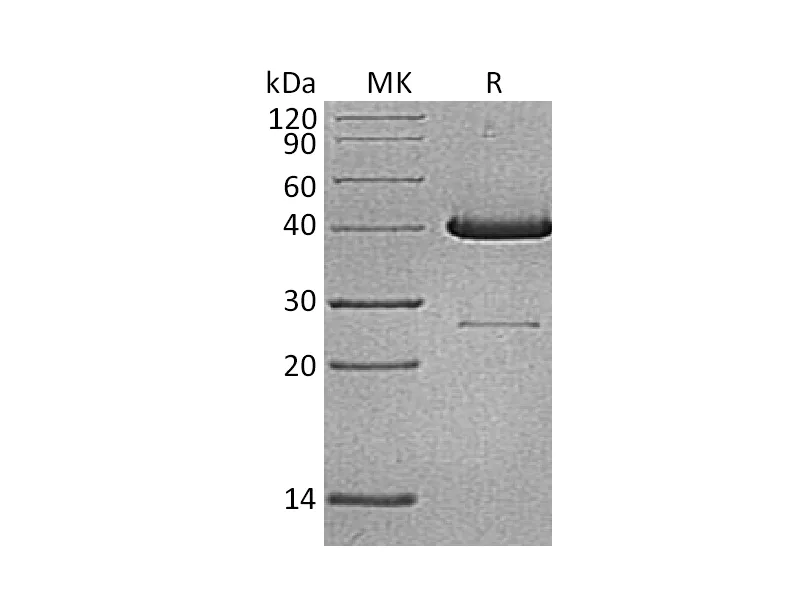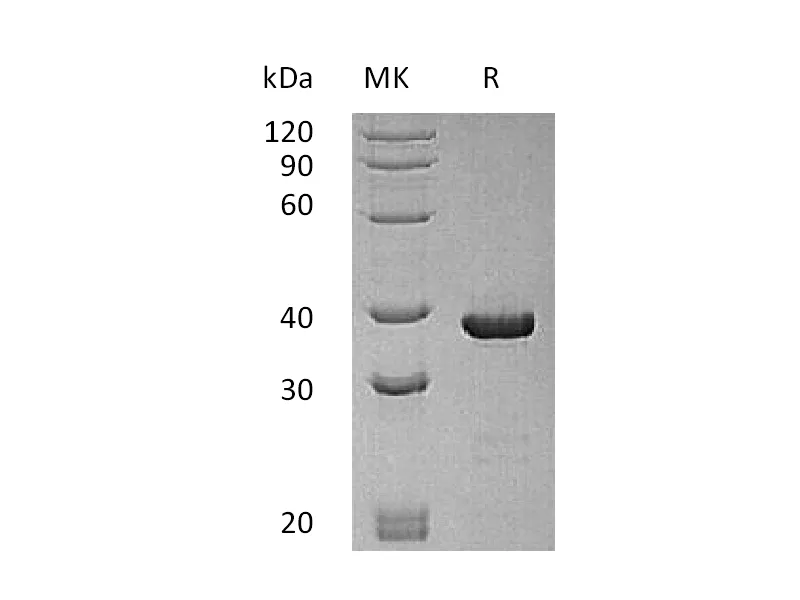| 产品名称 |
Recombinant Human LIGHT (N-mFc) |
| 英文名称 |
LIGHT/HVEM-L/TNFSF14/CD258 |
| 纯度 |
Greater than 95% as determined by reducing SDS-PAGE |
| 内毒素 |
<1 EU/µg as determined by LAL test. |
| 蛋白构建 |
Recombinant Human TNF Ligand Superfamily Member 14 is produced by our Mammalian expression system and the target gene encoding Ile84-Val240 is expressed with a mouse IgG1 Fc tag at the N-terminus. |
| Accession |
AAC39563.1 |
| 表达宿主 |
Human Cells |
| 种属 |
Human |
| 预测分子量 |
43.3 KDa |
| 制剂 |
Lyophilized from a 0.2 μm filtered solution of PBS, pH 7.4. |
| 运输方式 |
The product is shipped at ambient temperature.Upon receipt, store it immediately at the temperature listed below. |
| 稳定性&储存 |
Store at ≤-70°C, stable for 6 months after receipt.Store at ≤-70°C, stable for 3 months under sterile conditions after opening. Please minimize freeze-thaw cycles. |
| 复溶 |
Always centrifuge tubes before opening.Do not mix by vortex or pipetting.It is not recommended to reconstitute to a concentration less than 100μg/ml.Dissolve the lyophilized protein in distilled water.Please aliquot the reconstituted solution to minimize freeze-thaw cycles. |
| 分子别名 |
| Tumor necrosis factor ligand superfamily member 14; Herpes virus entry mediator ligand; TNFSF14; HVEM-L; LIGHT |
| 背景介绍 |
| Human TNFSF14 Protein, also known as LIGHT, belongs to a member of the tumor necrosis factor (TNF) ligand family. It can bind to NFRSF3/LTBR. It is a ligand for TNFRSF14, which is a member of the tumor necrosis factor receptor superfamily, and it is also known as a herpesvirus entry mediator ligand (HVEML). TNFSF14 encodes a protein with a 37 aa cytoplasmic domain, 21aa transmembrane domain and 182 aa extracellular region. The gene is predominantly expressed in the spleen and also found in the brain. Weakly expressed in peripheral lymphoid tissues and in heart, placenta, liver, lung, appendix, and kidney, and no expression seen in fetal tissues, endocrine glands, or nonhematopoietic tumor lines. TNFSF14 protein was found to probably function as a costimulatory factor for the activation of lymphoid cells and as a deterrent to infection by herpesvirus. Studies have shown that this protein can prevent tumor necrosis factor alpha mediated apoptosis in primary hepatocyte. Two alternatively spliced transcript variant encoding distinct isoforms have been reported. |
注意事项
本司产品仅用于科研,不用于临床诊断和治疗




